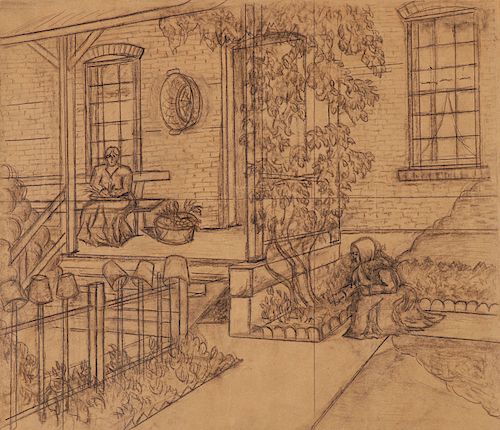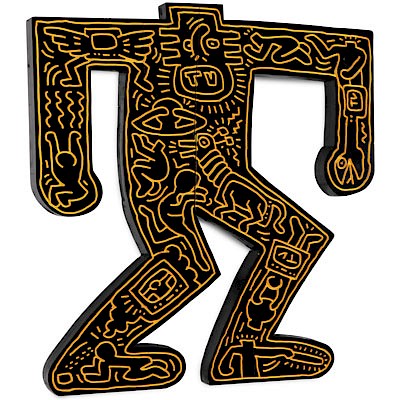IMPORTANT GRANT WOOD DRAWINGS
About Seller
2229 Lincoln Street
Cedar Falls, IA 50613
United States
Founded in 1969, Jackson’s International Auctioneers and Appraisers has grown to become one of the nation’s premier service providers for the sale and appraisal of antiques and fine art. Our regularly scheduled auctions bring to market a broad array of objects, including Russian icons, Old Master pa...Read more
Two ways to bid:
- Leave a max absentee bid and the platform will bid on your behalf up to your maximum bid during the live auction.
- Bid live during the auction and your bids will be submitted real-time to the auctioneer.
Bid Increments
| Price | Bid Increment |
|---|---|
| $0 | $10 |
| $100 | $25 |
| $500 | $50 |
| $1,000 | $100 |
| $2,000 | $200 |
| $5,000 | $500 |
| $10,000 | $1,000 |
About Auction
Nov 27, 2018
Jackson’s International is pleased to offer this important and exciting collection of modern & vintage masters from various cultures and periods. We are excited in the offering of modern masters deaccessioned from an important corporate collection, including significant fresh to the market works. Jackson's International Auctioneers and Appraisers accounting@jacksonsauction.com
- Lot Description
Attributed to GRANT WOOD (American 1891-1942)
Amana Home & Corner of Mill, Amana – Circa 1930 - a pair of preparatory drawings
Charcoal on brown paper
Unsigned, the first inscribed on verso “Colony Sketches”
15 inches x 18 inches and 22 inches x 28 inches (unframed)
Provenance:
By direct descent through the family of Wood protégé and artist Carl Flick (1904-1976). See entry for following lot.
The two drawings appear to be the original preparatory drawings for two autographed paintings by Wood executed in the Amana Colonies, Iowa. The first drawing relates to the painting, A Family Home Middle Amana, oil on board, signed lower right and measuring 13 inches x 15 inches which was sold in these salesrooms on June 16, 2015 as lot number 418 (see illustration below left). The second drawing is for the painting, Corner of Mill-Amana, also executed in oil on board, also measuring 13 inches x 15 inches as well as being signed and dated 1930. It too was also sold in these salerooms, auction of June 3, 2000 as lot number 237 having been consigned by the family of Carl Flick and understood by the family as having been given to their grandfather by Grant Wood. (See illustration below right). A painting by Flick of the same scene was sold at the same auction (lot 239) see entry for following lot.
Grant Wood’s association with the Amana Colonies is well known and well documented. It was one of many locations nestled in the environs of Wood’s Cedar Rapids, Iowa residence where he would frequently sojourn to sketch scenery. The Colonies, which reside twenty miles south and slightly west of Cedar Rapids, Iowa, were at that time comprised of an independent religious community founded by German Pietists in the 1850s. Their simple communal lifestyle far removed from the modern world and the brick and stone homes and dwellings located there obviously appealed to Wood’s fondness of rural and small town America which would become the basis for the Regionalist art movement.
Based on dated works by Wood, it would seem that he had been visiting and executing plein air paintings there as early as 1925; see Wood’s painting titled The Brick House-Middle Amana, signed and dated 1925. As well as Wood’s painting, Corner of Mill Amana, dated 1930 and illustrated on previous page.
An article in the Sunday edition of the Cedar Rapids Gazette on page 15, section III and dated March 22, 1931, carries the headline “Amanas May Provide Us With Art Work Next; Grant Wood Discovers A Promising Painter.” The article goes on to narrate the earlier meeting of Grant Wood and Amana Colonist and would be artist Carl Flick from whose family the present and following lot of drawings has been consigned. The article describes Flick, at the time 27 and convalescing, as seeking the advice of Grant Wood with regards to his interest in painting and what types of brushes he should use. According to the Gazette article, Wood replied to Flick in person and encouraged him to paint the scenes which surrounded him, “He painted the mill scene and he is at work on a corner of his own sitting room with its shiny black decorated stove.” The cutline beneath a bust portrait photograph of Flick reads “Having discovered through the aid of Grant Wood that he has a rare supply of material for artwork at his very door, Carl Flick of West Amana is turning his genius to the painting of scenes at the colonies." As it turned out Flick’s correspondence to Wood launched a lifelong relationship of teacher-student that proved instrumental for Flick's emerging role as a Regionalist artist.
Based on the offered drawings as well as those in the following lot, it would seem Wood utilized the well establish academy method of art instruction in which the student reproduces the same work as the instructor at whose side the student works. This fact would seem to be evidenced by the preparatory drawing for the Corner of Mill-Amana. Two drawings from the same vantage point of this scene exist (one offered in this lot another in the following lot) as do two corresponding paintings (both sold in 2000). Both drawings seem clearly to be by different hands. The drawing offered in this lot is fluid, confident and more quickly rendered, and shaded very much like Wood’s signed and dated painting of the same scene which shows the spontaneity of many of his known Amana sketches. Whereas, the other drawing (offered in the group of drawings in the following lot) is clearly more labored and stiff , a characteristic repeated in Flick’s painting of the same scene (see entry and illustration for following lot 43).
Wood’s penchant for utilizing brown paper in his preparatory drawings is well documented. Indeed a large number of these works still exist including study for The Birth Place of Herbert Hoover, 1931, study for Daughters of Revolution, 1932, study for Dinner for Threshers, 1934, Return from Bohemia, 1935, as well as many others.
SHIPPING NOTICE:
Jackson’s is your sole and only source for one stop packing and shipping. With over 50 years of experience, our professional, affordable and efficient in-house shipping department will be happy to provide you a fair and reasonable shipping quote on this lot. Simply email us before the auction for a quick quote: shipping@jacksonsauction.com or call 1-800-665-6743. Jackson’s can expertly pack and ship to meet any of your needs. To ensure quality control Jackson’s DOES NOT release to third party shippers. - Shipping Info
-
All successful absentee bidders may request a shipping quote for Jackson’s International to provide shipping to be sent with their invoice. This shipping quote includes the cost of standard shipping as well as charges for materials and labor. Please indicate any special shipping instructions on the bid form. Purchases paid by personal check will not be shipped until funds have cleared Auctioneer's bank. Please note that International shipping is not available for ivory items. These items will only be shipped within the United States, except to California, Connecticut, New Jersey, and New York. All buyers agree to comply with any additional restrictions regarding the trade of endangered species as a condition of sale. It is the purchaser’s responsibility to obtain any licenses and/or certificates as well as any other required documentation prior to shipment. In the case of denial or delay of any required documentation or paperwork, they buyer will still be responsible for making on-time payment for the total purchase price of the lot. Therefore, if you are unsure, Jackson’s recommend that you DO NOT BID on ivory items. We support the ban on the sale of non-antique carved ivory objects of art.
-
- Buyer's Premium



 EUR
EUR CAD
CAD AUD
AUD GBP
GBP MXN
MXN HKD
HKD CNY
CNY MYR
MYR SEK
SEK SGD
SGD CHF
CHF THB
THB














